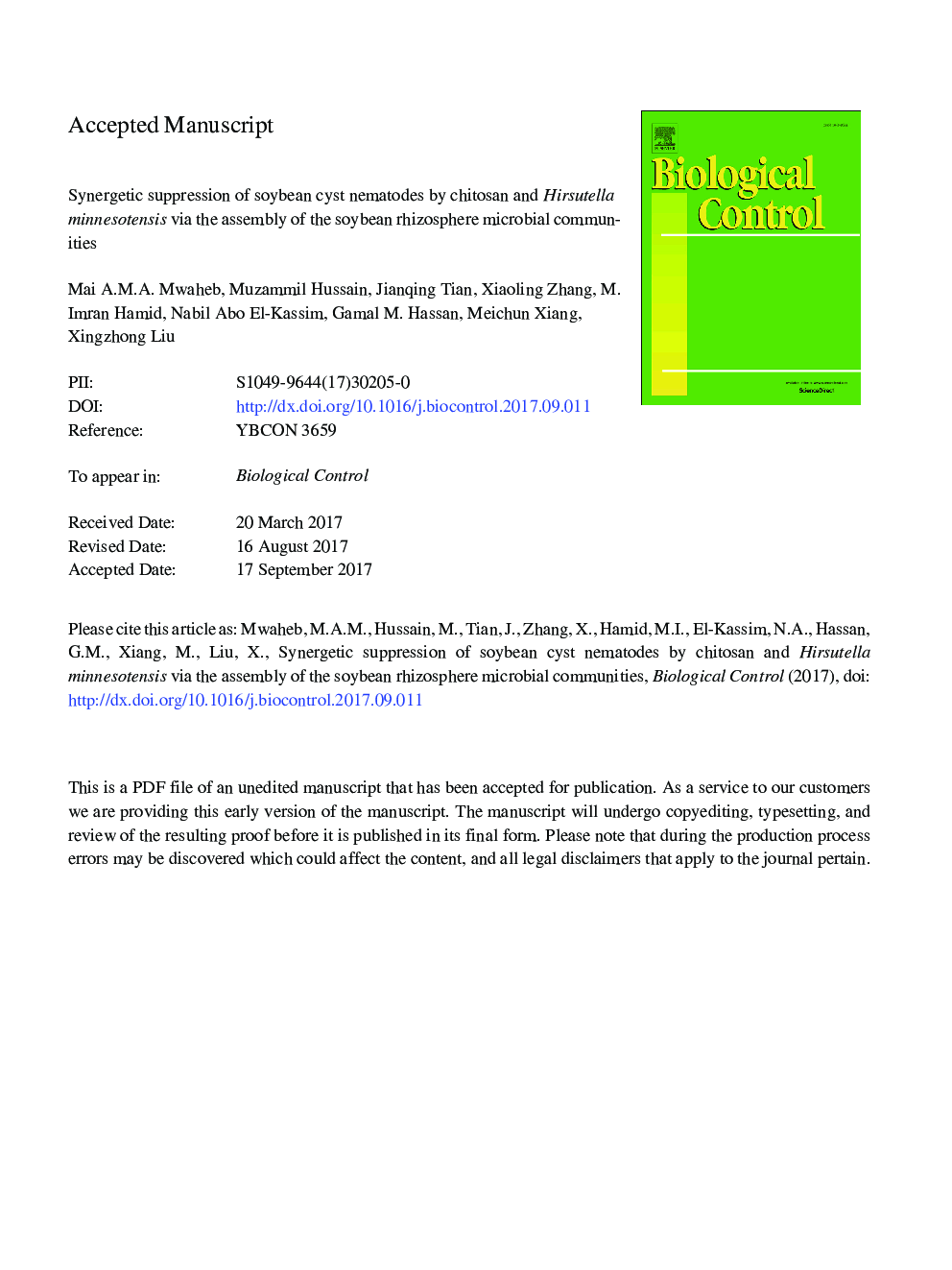| Article ID | Journal | Published Year | Pages | File Type |
|---|---|---|---|---|
| 5760697 | Biological Control | 2017 | 41 Pages |
Abstract
Chitosan, a deacetylated form of chitin, has been shown to enhance the biocontrol efficacy of nematophagous fungi to parasitize nematodes. However, the mechanism by which nematode endoparasitic fungi with chitosan suppresses disease caused by the soybean cyst nematode (SCN; Heterodera glycines) through the rhizosphere microbiota remains unclear. In this study, we performed a greenhouse experiment with soybean grown in five soil treatments. Strong synergetic suppression of the SCN egg density was observed using a combined treatment of H. minnesotensis and chitosan (SHg+Hm+Ch), followed by treatments with H. minnesotensis (SHg+Hm) or chitosan (SHg+Ch). The parasitism of SCN juveniles (J2) and amount of H. minnesotensis DNA were significantly increased by the presence of chitosan in soil. The bacterial and fungal communities of the soybean rhizosphere, profiled by the Illumina high-throughput pyrosequencing, showed that the rhizobacterial OTU richness was decreased by SHg (nematode infested), SHg+Hm, SHg+Ch, and SHg+Hm+Ch treatments, and fungal richness was increased by the same treatments except for SHg+Ch, compared to the mock-inoculated plants (S). Overall, the bacterial and fungal community structures were different among the different treatments, and soil containing chitosan was distinct from H. minnesotensis with and without chitosan as well as from nematode infested or uninfested soils. Except for the enhancement of H. minnesotensis, chitosan also increased the bacterial genus Streptomyces and fungal genera Purpureocillium and Pochonia, which have been documented to suppress SCN in the soybean rhizosphere. Combined application of H. minnesotensis and chitosan led to shifts in the abundance of the core rhizobacterial and rhizofungal taxa that respond to soil suppression of SCN. In this study, we provide evidence that chitosan shifts the abundance of resident and inoculated biocontrol agents in the rhizosphere to suppress pathogens.
Related Topics
Life Sciences
Agricultural and Biological Sciences
Agronomy and Crop Science
Authors
Mai A.M.A. Mwaheb, Muzammil Hussain, Jianqing Tian, Xiaoling Zhang, M. Imran Hamid, Nabil Abo El-Kassim, Gamal M. Hassan, Meichun Xiang, Xingzhong Liu,
